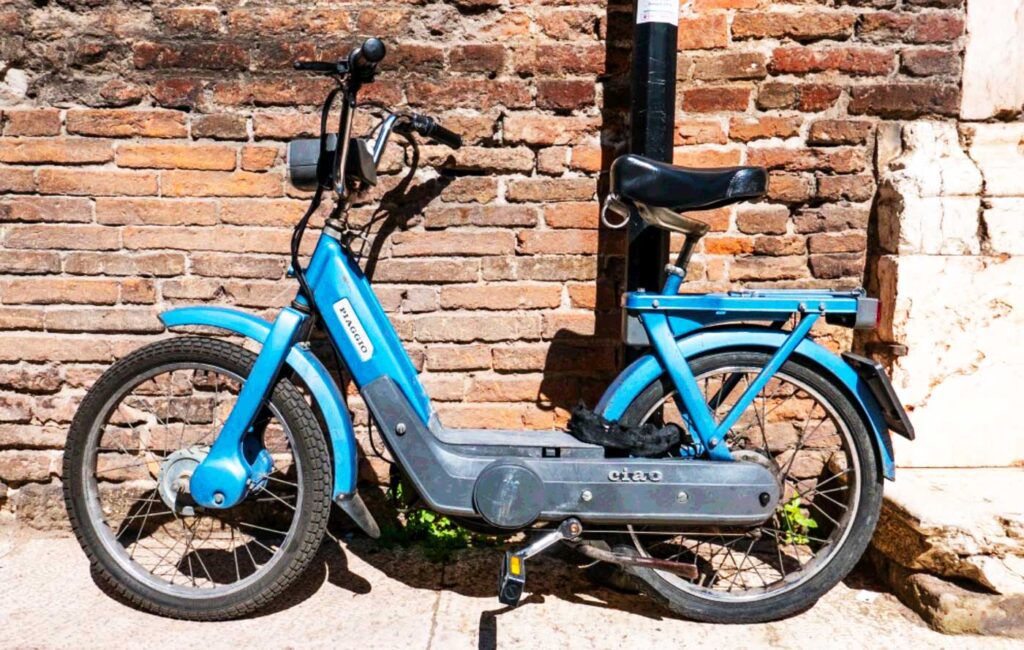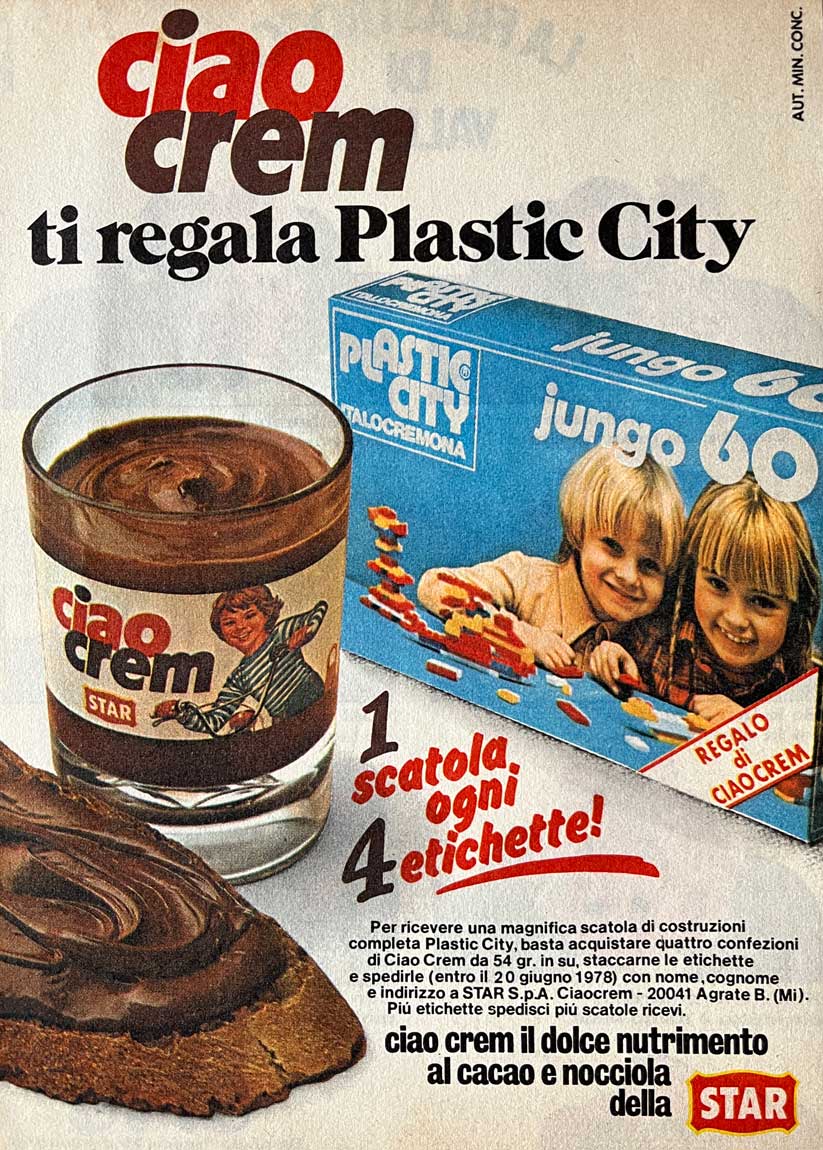Despite the drawn-out, soupy winters of the Pianura Padana, there’s a word that sparks a shot of summer into a dreary day. That word is ciao. It’s short and sounds like meow.
Yet, how can a word that sounds like a cat, play such a huge part in the daily life of Italians?
First port of call is my copy of the Oxford English Dictionary. The entry for Ciao reads: Italian, dialect alteration of schiavo ‘(I am your) slave,’ from medieval Latin sclavus ‘slave’. I follow with an online search, and end up consulting a digitized copy of Giuseppe Boerio’s Dizionario del dialetto Veneziano (1829), which includes this entry for: schiao: Syncopation of Schiavo, Slave, a way of greeting others with great familiarity; corresponds to the Farewell, Greetings, Good luck, Goodmorning, Good night.
This concept of intimacy has prevailed over time, and my first 7.00 a.m. ciao finds its cheery home in the service sector. For several years now, I’ve exchanged hundreds of ciaos with the mother-and-son duo who run my local coffee bar here in Parma. Pushing open the glass paneled door, I pronounce the ubiquitous word, which not only serves as a hello – it also orders my “usual”- a creamy decaf cappuccino.
Regulars come and go, and greetings multiply into a freewheeling jam. Permanency varies: the suited estate agent zaps in and out leaving a scent of something possibly Armani; the painter-decorator takes a seat and lingers over the sports pages of the Gazzetta di Parma; the beret-wearing lady fires off banter by the bar. But all are producers of the word that rhymes with meow.
That is, until a new face enters—then the polite buongiorno is proclaimed.
But it’s 7.35 am, and I need to get going. Because of the fog – I chose to drive.
Up until 2006 I could have gone to work on a Ciao moped. With a U-shaped chrome handlebar, solitary saddle-seat, and pedals to start the 50cc engine, it looked a lot like a chunked-up bicycle. And because of its step-through frame, it was perfect for skirt-wearers. Yet it rapidly gained popularity among trouser-wearers too—thanks, in part, to its potential for spectacular wheelies.

Launched in 1967 by Piaggio (those of the Vespa), the Ciao saw its hey-day in the 1970s and ’80s. Italy’s strade and piazze were full of young Italians buzzing off to school and work. More than 3 million models were sold in 39 years. Even though it’s no longer manufactured, the legend lives on, with nationwide Ciao clubs and adventurers throughout the country – such as Marco Tenerini, who in 2022, on the back of his 1984 green Ciao, set off from Viareggio in Tuscany to the North Cape of Norway – covering 5000 km.
My journey to work is less than 5.
I park the car and cross the park that hosts the kids’ football club. On the far side of the pitch, fog blurs my office buildings into a grey, soft edged square. Droplets of humidity gather on my fringe.
Once inside, office ciaos light up this wintery day. Listen closely to a co-worker’s tone and volume, and you can catch their mood. Did the gas bill arrive? Did they get stuck in the traffic jam by the university campus?
An office supplier gets out of the lift and puts two boxes of A4 by the copier. He blows his nose, says ciao and pulls out his iPhone. “Mio figlio!” he exclaims, and presses play. Crouched next to a toddler, pointing at the camera, is his wife. “Mia moglie!
“Fai ciao con la manina,” she says to the child—Say ciao with your little hand.
Holding up a plump hand, the child opens and closes it, producing an uncertain wave.
“Guarda!” the office supplier beams. “Ha detto ciao con la manina.”
And that’s how toddlers from Trieste to Taranto learn that a wave means ciao.
Throughout the morning, ciaos fluctuate between more polite forms of language—buongiornos and salves (“Good morning” and “Hello”)—depending on the level of familiarity (or superiority) with the speaker. Time moves like a turtle slogging up a hill, but between V.A.T. returns, a Golden Delicious, and several loo breaks (leading to flighty ciaos in the corridor), the morning smudges into lunchtime.
Colleagues disperse. Those heading home might be greeted by the non-verbal ciao of a wagging tail. Those who remain, gathering in the communal area, exchange ciaos with a quick scan of the contents of each other’s lunch box. Unhealthy or not.
It goes to follow that even food has been touched by the C-word.
The same generation of Ciao moped riders could also have enjoyed a strawberry flavoured ice lolly – called Ciao. A red, plastic whistle replaced the traditional wooden stick and an anime-style football fan, blowing a whistle and waving an Italian flag featured on the packet. And if it was too cold for ice cream, Ciao Crem chocolate spread was available, ready to be dolloped onto doughy panini or spooned, Nutella style directly from jar to mouth.
I contend with celery sticks and a cube of wobbly crescenza cheese. Followed by an afternoon of invoices and yawns.

At last I leave the office, bidding ciao to the cleaner and the league of overtimers. Crossing the park, I pass the football pitch where a bunch of boys slalom between hi-vis cones while puffer-clad parents huddle to the side. Some vape, others are scrolling through their phones. Nearly all keep a judicious eye on the coach.
I spot the caretaker and a misty ciao escapes my lips.
He salutes by raising a hand. His bunch of keys jangling a metallic music. That’s when I notice the keyring. It’s Ciao, the stick-like mascot for Italia ‘90, with a football head and red, white, and green cubed limbs.
Coming up with a symbol for the 1990’s FIFA World Cup was an elaborate affair for Italians, and a nationwide competition took place. Graphic designer Lucio Boscardin came up with his lego-like stick figure, which was chosen from 50,000 entrants by a panel of judges that included designer Pininfarina and advertising guru Armando Testa.
However, the mascot still needed a name. Amico, Beniamino, Bimbo, Dribbly, and Ciao were put forward as candidate names, and Italians went to the vote. You know the outcome, but I often wonder how it would have turned out had Dribbly won the ballot.
At home later my husband phones. He says he’ll be stopping off to buy the salt tabs for the water softener. He then ends the call with a ciao. Except he has a habit of repeating it five times.
“Ciao, ciao, ciao, ciao, ciao.”
It doesn’t bump the fog away, but it provides warmth.
This is a word that comes with ice-cream, chocolate spread, and the wind in your hair. Snowballing through the decades, it continues to impact not only everyday life but ideas.
Ciao isn’t just a word, it’s a symbol of a country and of its people.
And every time a cat ‘says’ meow, who knows, perhaps it too wants to greet the world with a ‘ciao’.
